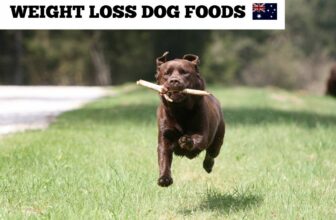How to Read Pet Food Labels

When you realise how slippery those suckers are who create pet food formulations and pet food ingredients labels, you’ll start to realise how fooled you have been.
I don’t normally give away my secrets, but for the sake of helping you make better choices for your dog and cat you can consider this your go to guide. Hopefully the information below will help you understand what’s really in your pet food, which will be a springboard to feeding them a better diet and improving their health and wellbeing.
How can you feed your pet a nutritious diet if you don’t know what you’re feeding them?
And if you don’t know what you’re feeding them, you’re probably not feeding them a very good pet food.
I’ll go into a lot of depth in this guide, but if at any point you want to bail out, then simply skip to the reviews.
Also, keep in mind pet food labels will only give you a guideline, they won’t tell you much else.
For example, “chicken” from one manufacturer might be top quality chicken processed in a hygienic human-grade food production facility. Another brand may use chicken waste left in the yard collecting flies and maggots in the hot sun.
These factors are reflected in the reviews, whether I mention them or not. Having run this website for many years I have accumulated a great deal of information on pet food manufacturers, from pet food insiders, or from reports from pet owners like yourself. I have also visited some facilities, and dealt with many people in the industry.
Some of the information on this guide is relevant to the Australian Standard of Manufacturing and marketing of pet food, of which you would need to pay over $100 for the privilege of reading (that’s transparency for you!).
Some of the information is relevant to the standards in place by AAFCO: The Association of American Feed Control Officials, which is often used as a fallback in Australia due to not really having our own standards.
This guide to reading pet food labels will cover the following:
- Introduction to pet food labels
- Understanding the ingredients list
- Using the analysis and composition to determine key ingredients
- Assessing key ingredients to determine how nutrition is met
- Feeding guidelines
- Understanding specialised claims (natural, organic, grain-free, hypoallergenic, limited ingredient, human grade etc)
- Determining the manufacturer or brand
- The importance of due diligence, consumer feedback, and reviews
Introduction to pet food labels
The importance of understanding what you’re feeding your pet
Legal requirements for pet food labelling
Understanding the ingredients list
Percentages and order of ingredients
On a pet food label the ingredients must be listed in descending order of percentage.
I must emphasise on the pet food packaging itself, as ingredients listed on a company website may use artistic merit to give you a more appealing but somewhat false depiction of the food. I have seen this a few times, often with carbohydrates pushed down the ingredients list to make meat and more attractive ingredients seem more prominent.
Most pet food manufacturers manipulate the ingredients panel to make a formula look more appealing to you. Quite often a formula will be devised for this purpose.
Let me give you an example with the common marketing phrase “meat first ingredient”:
When you look at the ingredients of a pet food you will likely want meat to be the main constituent of the pet food. As we generally only read the headlines, it is common to read the first ingredient and assume it’s significant.
This isn’t the case.
A good technique is to consider all ingredients before the “fat” content to be the main ingredients. Everything after the fat to be a minor ingredient (although not always). Fat content is usually around 15% of the formula, so it’s possible the main ingredients amount to over 80%, and the minor ingredients the remaining 5% (as a rough example).
If there are two main ingredients listed as “meat, rice” then we can assume 40% meat and 40% rice. A pet food manufacturer would never list this as “rice, meat” because it wouldn’t sell as well as “meat, rice”, even if the amount of both in the food are the same.
I’ll sidetrack a little to say these percentages are “wet weight”, prior to cooking, which means once processed into a kibble the rice will be the more significant ingredient. Simply because meat contains more moisture.
Here is another “meat first ingredient” formula – “meat, plant, plant, plant, plant”.
This is a more common formulation than you may think, and many popular brands have won loyalty with Australian consumers based on a belief these products contain a significant amount of meat.
In reality, meat could be 20% of those main ingredients, or 80% plant matter.
This sounds much worse, doesn’t it?
But did you know some of the most popular brands sold worldwide use a formula along the lines of “cereal and cereal by-products, meat and meat by-products”, with a significant emphasis on the cereal grains.
Identifying key ingredients to look for or avoid
How to recognise problematic ingredients (common allergens or potentially harmful additives)
Pay attention to ambiguous ingredients
Using the analysis and composition to determine key ingredients
“Guaranteed analysis” vs “Typical analysis” (minimum and maximum values)
Most pet foods in Australia have a “guaranteed analysis”, particularly with dry foods. These provide us guaranteed minimum or maximum percentages for common nutrients – crude protein, crude fat, and sometimes moisture, ash, fibre, or additional nutrients like vitamins and minerals.
Some pet foods opt for a “typical analysis” instead. You can argue there are benefits to both types of analysis, but you tend to find a typical analysis on cheaper brands of pet food.
A “typical analysis” will give you a more average approximation of the nutrients in the pet food based (possibly loosely) on testing and analysis. You may consider this more accurate, but there are reasons I consider it the worse option.
Let me give you an example:
A dog food may have 25% protein and 15% fat.
If you consider protein and fat important nutrients for your dog or cat, which you probably do, then a guaranteed analysis will give you an assurance those percentages are minimum. The bag you buy may have, for example, 27% protein and 17% fat, which likely means less carbohydrates.
With a typical analysis, however, the reality may be 23% protein, 13% fat, and more carbohydrates.
Generally I don’t consider carbohydrates ideal for a dog, and as cats are carnivores they don’t really need carbohydrates.
With a guaranteed analysis the percentages must be legally met, and any variance will likely be in your benefit.
“As fed”
Few pet foods have an “as fed” panel. It’s a shame as it’s a very useful diagnostic tool for us to determine the nutrient levels in a food as it is served to your dog.
What this means is the values on the “as fed” panel represent the nutrients in the food in it’s regular state, such as in kibble form. Changes which may occur during storage, preparation, or feeding aren’t considered.
The “as fed” panel helps you as a consumer understand the nutritional intake your dog (or cat) will consume based on the recommended serving size.
It’s worth keeping in mind the recommended serving size may not tally with what you actually feed your dog – that depends on their size, age, weight, activity level, health, and of course whether the recommended serving size is honest.
I don’t want to get into too much depth, but the reason recommended serving sizes may not be a good metric is because of the ingredients. The best example is a dry cat food – a cat as a carnivore satiates on meat, which means they will consume non-meat ingredients (perhaps in excess) to satiate on the nutrients they need. This may mean they eat more than they should, and get fat as a consequence.
“As fed” vs “Guaranteed analysis”
“As fed” refers to the nutritional content of the pet food as it is served to the animal without any adjustments. Guaranteed analysis is a set of minimum or maximum values for certain nutrients in the pet food.
“As fed” gives information about the actual nutrient content in the food as it is, without considering changes that may occur during storage, preparation, or feeding.
“Guaranteed analysis” provides a standardised way for us as consumers to compare the nutrient levels of different pet foods, based on percentages such as crude protein, crude fat, crude fibre, moisture, and sometimes other nutrients.
While “as fed” gives you information about the current state of the pet food without any adjustments, the guaranteed analysis provides minimum or maximum values for key nutrients. Both pieces of information are important for understanding the nutritional composition of the pet food and ensuring that it meets the dietary needs of your pet.
Being able to decipher the information in both cases can give us a better understanding of the food’s nutritional profile.







Hi there! Am I missing a link or is this post currently incomplete?
Hi Hayley, you’re not missing anything – it’s long overdue completion!
Sorry! I will get around to finishing it….